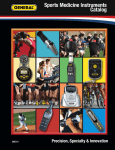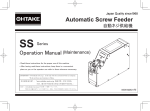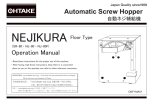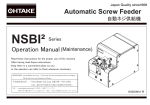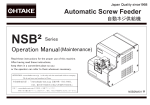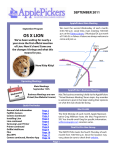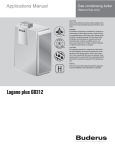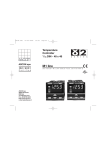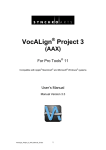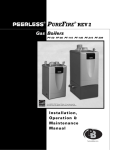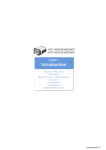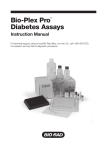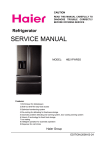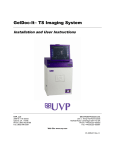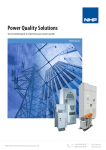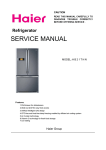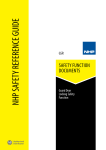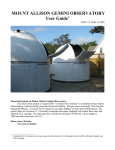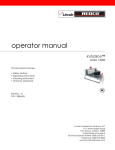Download Operation manual (Maintenance)
Transcript
Automatic Screw Feeder 自動ネジ供給機 QUICHER Series NJ² NSRI Type Operation manual (Maintenance) ・Read these instructions for the proper use of this machine. ・After having read these instructions, keep them in a convenient place so you or the operator can refer to them whenever necessary. ATTENTION : www.ohtake-root.co.jp is the only web site associated with our company. We do not have any branches in China. www.ohtake-root.co.jp www.ohtake-root.co.jp HP NJ2MA01M Contents 1. Before Use ・・・・・・・・・・・・・・・・・・・・・・・・・・・・・・・・・・・・・・ 1 2. Operating Precautions ・・・・・・・・・・・・・・・・・・・・・・・・・・・ 1 3. Component Names ・・・・・・・・・・・・・・・・・・・・・・・・・・・・・・ 3 4. Pre-operational Checks and Adjustments ・・・・・・・・・ 4 6. Maintenance ・・・・・・・・・・・・・・・・・・・・・・・ 13 7. Troubleshooting Guide ・・・・・・・・・・・・・ 16 5.Operating Procedures and Operational Checks ・・・ 9 10. External dimension ・・・・・・・・・・・・・・・・・ 22 8. Main Specifications ・・・・・・・・・・・・・・・・・ 19 9. Warranty ・・・・・・・・・・・・・・・・・・・・・・・・・・・ 21 1. Before Use Thank you for purchasing the NJ 2 Series Automatic Screw Feeder. Before using this machine, make sure that the following accessories are supplied with the machine. Accessories Instruction manual x 1 AC adapter x 1 Allen wrench x 1 Screwdriver x 1 To obtain the optimum performance from this machine, it is essential that you thoroughly read this manual. 2. Operating Precautions Installation Install this machine at a level, steady place. CAUTION If you install this machine in an unstable location, it may topple or fall, causing personal injury. Do not operate this machine in places where flammable or explosive gas exists or with high humidity. CAUTION Using this machine in such locations will create a safety hazard. When shutting down this machine at the end of day or leaving it unused for long periods of time CAUTION When shutting down this machine at the end of day or, leaving it unused for long periods of time, disconnect its AC adapter from the power outlet. -1- AC adapter the AC adapter attached only. Use CAUTION Rail Do not scratch the rail. Do not apply any oil or grease to the rail. Incompatible screws Use specified screws only. Avoid using screws to which oil, grease, dirt, or other foreign matter is attached. Screw access precautions When picking up screws, exercise care not to apply any undue force or shock. Avoid foreign objects Do not position your fingers or foreign objects in the screw bin, holes, or other open spaces as it may cause CAUTION personal injury. Be sure that no inappropriate screws or foreign objects is dropped into this machine. Abnormalities during operation If any abnormality or troubles occur during operation, turn off the power switch and disconnect the AC adapter from CAUTION outlet. power If you continue to operate the feeder while it is acting abnormally, a risk of fire, electric shock, or personal injury may occur. If you encounter any abnormality, contact your local dealer. Do not make attempt to repair, disassemble, or modify this machine CAUTION When this machine is in need of repair, contact your local dealer. -2- 3. Component Names Screw bin lid Rail front-rear position lock screw access hole Shutter (in front of screw passage plate) Passage plate Bit guide assembly Screw passage window Bin scooper plate Holding plate (Screw guide1) Bit guide Sensor Power switch Passage plate lock screw Screw bin Bin scooper plate Brush Timing shaft Rail assembly Timer setting control Tilt lock screws External output jack -3- DC jack 4. Checks and Adjustments before Operation 4-1. Confirming the machine’s Model Number Before using this machine, verify that the model matches the screw size to be used. To confirm the model number, note the labels attached to the rail assembly . The identification label marking is in R** form. This machine can be converted to different screw sizes by replacing the rail assembly, and the passage plate. When you replace component parts, verify the actual screw size to be used. Type NJ2-23 Model number Screw nominal diameter Rail model number Passage plate model number NJ2-2320 φ2.0 R20 W2320 2 φ2.3 R23 W2323 2 φ2.6 R26 W2326 2 φ3.0 R30 W2330 2 NJ -4535 φ3.5 R35 NJ2-4540 φ4.0 R40 NJ2-4550 φ5.0 R50 NJ -2323 NJ -2326 NJ -2330 NJ2-45 W4540 W4550 NOTE: Replacement rails, escapers, and passage plates are available as options.) Rail label Rail assembly This machine is factory adjusted for pan-head screws prior to shipment. If readjustments are needed to match the screw applied, complete the following check/adjustment procedures before using this machine. -Checking and adjusting the brush -Checking and adjusting the holding plate (screw guide 1) -Checking and adjusting the passage plate -Checking and adjusting the rail assembly CAUTION Before performing any adjustment procedures, please turn off the power -4- 4- 2. Checking and Adjusting the Brush Turn off the power switch before performing any check/adjustment procedure. The switch shown below is in the off position. Check the height of the brush. Ensure that the brush check/ adjustment procedure is completed while the brush is placed in a horizontal position as shown at right. To place the brush in a horizontal position, rotate the timing shaft with the Allen wrench supplied with the machine. Please prepare the screws to be used. Drop a few of them into the rail groove, check and adjust the brush height as directed below. After the brush is placed in a horizontal position as shown on right, rotate the brush. Adjust height of the brush, so that the gap between tip of the brush and screw heads is approximately 0 mm. Brush Brush mounting screws If any adjustment is needed, perform the following procedure: Loosen the brush mounting screws. Make adjustments so that the tip of the brush is slightly touchingscrew heads. In this instance, avoid lowering the brush too much. At completion of adjustment, tighten the brush mounting screws. Timing shaft Please make sure that the gap between tip of the brush and employed screw heads is about 0 mm. (slightly touching) After the brush is properly adjusted, rotate it again to verify that it smoothly moves without any obstruction. Employed screws -5- 4- 3. Checking and Adjusting the Passage Plate Drop few screws into the rail groove. Slide the screws to the passage window section and check or adjust the passage plate height. Check that the Passage plate clearance between the passage window upper end and the screw heads is not greater than about 0.5 mm and that the screws can pass the passage window. Brush If the above requirements are not met, repeat above adjustment procedures as needed. After adjustment is completed, tighten the passage plate retaining screw. If the Employed screw screw applied has a relatively short shank, fine adjustments may be needed. For screws having a relatively long shank, however, coarse adjustments will suffice. Passage plate retaining screw Up-down adjustment Passage plate Approx. 0.5mm or less Employed screw Rail Rail Bit guide assembly Holding plate(screw guide1) 4- 4. Checking and Adjusting the Holding Plate (Screw Guide 1) Drop 5 to 10 applied screws into the rail groove. Tilt the machine or operate it so that the screws are delivered to the rail assembly stopper. If the shutter is closed or there is no clearance between the holding plate (screw guide 1) and screw heads, the screws will not be able to move. The screws can go through when the shutter is open with an adequate clearance provided between the holding plate (screw guide 1) and screw heads. When the clearance is 0 to 1 mm, the holding plate (screw guide 1) height needs no further adjustment. NOTE: If the rail stopper captures a screw and brings the vibration to a stop immediately, adjust the timer setting control on the rear side of the unit. -6- Holding plate (screw guide 1) Stopper Bit guide Approx. 0 to 1mm Rail Employed screws If the holding plate (screw guide 1) height needs to be adjusted, proceed as directed below. Tilt this machine or operate it so that the screws are delivered to the rail assembly stopper. If there is no clearance between the holding plate (screw guide 1) and screw heads, the screws cannot move. The screws can move while the shutter is open with an adequate clearance provided between the holding plate (screw guide 1) and screw heads. If the screws do not move to the escaper section, loosen the bit guide assembly retaining screw, and rotate the bit guide assembly up-down adjustment screw counterclockwise with the accessory Allen wrench to move the holding plate (screw guide 1) upward. Bit guide assembly height Adjust the holding plate (screw guide 1) height by rotating the bit guide assembly height adjustment screw adjustment screw to provide a clearance of 0 to 1 mm between the holding plate Clockwise rotation → Descent (screw guide 1) and the head of the screws. Counterclockwise → Ascent Stopper When performing the above adjustment procedure, make sure that the gap between the holding plate (screw guide 1) and rail is uniform. Please make sure that the gaps between the holding plate and the rail are the same on the rear end and the front end. Bit guide assembly After completion of adjustment, be sure to tighten the bit guide assembly retaining screw. If the employed screw has a relatively short shank, fine adjustments are needed. For screws having a relatively long shank, however, coarse adjustments will suffice. Holding plate (Screw guide1) 4- 5. Checking and Adjusting the Rail Assembly Check the position of the stopper and sensor. ・Ensure that the rail is fixed so that "A" portion of the stopper is 0mm to 0.5mm ahead of the sensor optical axis. ・If adjustment is necessary, adjust it front and rear by loosening the rail front-rear position lock screw Bit guide assembly retaining screw Rail front-rear position lock screw access hole A Sensor optical axis Rail assembly -7- 4- 6. Checking and Adjusting the Bit Guide Place five to ten screws in the rail and tilt this machine until they hit the stopper on the rail assembly. When the internal shutter is closed, the screws cannot go through the passage plate. If it is closed, turn the timing shaft clockwise with the Allen wrench to keep it open. The stopper is fixed to the rail assembly. The adjustment of the stopper is made by moving the rail assembly front and rear. If the “V” groove on the bit guide and the rear point of the Phillips screw head are not aligned, adjust as follows: Loosen the bit guide mounting screw with the Allen wrench and move the bit guide forward and back to put them in alignment. Please remember to tighten the screws after adjusting. Bit guide mounting screws Bit guide V groove Stopper Employed screw -8- 5. Operating Procedures and Operational Checks 5- 1. Loading the Screws Open the screw bin lid. While the bin dipper plates are at the lowest position, pour in the screws until they are piled up to about 3 mm below the rail upper surface. Make sure that screws are equally distributed into the right-and lefthand bins. Approx. 3 mm CAUTION Do not load the screws to excess amount. Rail Screw bin Employed screws Bin scooper plates 5- 2. Operating this machine Connect the accessory AC adapter plug to the DC jack on the rear of this machine, and the other side to a power outlet. Turn on the main power switch. The lamp incorporated in the power switch will illuminate. Turning on the power switch causes the drive motor to rotate normally, the bin scooper plates to move up and down, and the rail to vibrate. After a while, the loaded screws are sequentially transported along the rail and delivered to the stopper. If the screw is not picked up for an extended period of time, the vibration will automatically come to a stop. At the moment the screw is picked up, this machine resumes operation. Timer setting control Power switch (lampincorporated) DC jack - 9- Operational features This machine is equipped with an overload protection circuit. If a movable part is overloaded during a feeder operation, for instance, when a small screw or other particles is trapped, or excessive screw is placed into the screw bins, the overload protection circuit will activate. Function descriptions and remedies Under normal conditions, the drive motor in this machine rotates in normal direction to feed the loaded screws continuously to the escaper section, thereby allowing you to obtain the screws successively. However, if any movable section is overloaded, the drive motor will rotate in reverse direction for a predetermined period of time and then resumes its normal rotation. When the cause of the overload is eliminated upon motor reversal, the motor reverts to its normal rotation, resuming normal screw supply. If the cause of the movable section overload is not cleared upon motor reversal, the overload protection circuit performs the reverse rotation and normal rotation repetition cycle for a predetermined period of time and then shuts off power supply to the drive motor. When the power to the drive motor shuts off as above, please turn off the power switch and clear the cause of overload. For instance, when the screw bins are overloaded with screws, reduce the number of screws in the bins. If a screw or other article is trapped in a movable section, please remove it with tools. After the cause of the overload is eliminated, turn the power switch back on (power-on reset) and resume operation. Timer setting This machine is equipped with a timer. The timer setting can be adjusted according to the screw type. Function descriptions The actual screw feeding speed varies with screw type. This machine continues running while there is no screw in the screw removal area of the escaper section. It stops its operation when a predetermined period of time elapses after a screw is retained in the removal section. This duration of time can be adjusted with the timer setting control on the rear of the feeder. It is recommended that you decrease the timer setting when the feeding speed is high, and increase the setting when the feeding speed is slow. When adjusting the timer setting, please exercise care and do not rotate the control beyond its permissible range. - 10- Increase Decrease Timer setting control This machine is equipped with an external output signal connector. The incorporated signal cable enables you to obtain a signal that indicates whether a screw is present in the escaper section screw removal area. [ Function] When picked screw up : signal high (ON) approx. 0.2sec Incoming current : shall be limited to less than 100mA CAUTION : Additional resistor is required on external circuit for regulating current [Capacity] MAX DC current : 100mA External supply voltage : 5 to 24VDC (max27VDC) [CAUTION] Please use φ3.5-3mm micro-type single plugs. Recommended type : Marushi electric Mfg. MP-019LC(Straight type) MP-012LN(Right angle type) Recommended connector cable : Marushi electric Mfg. SC420S-2M-RS External output jack Example Inside Outside This machine is equipped with a tilting mechanism When the screw feeding speed is too slow, you can install this machine in a tilted position. Descriptions Loosen the tilt lock screws. Pull out the base bracket from the rear of the feeder and fix it in an appropriate position. After this machine is tilted, make sure that it is steady. Please do not tilt this machine beyond the capacity of its tilt mechanism. - 11- A tilt of up to about 12 mm can be provided. Base bracket Tilt lock screw 5- 3. Picking up the screw Attach a bit to your electric screwdriver to match the head of the screw. Refer to the following. Standard Bit shape JIS small screw Phillips head Notice: The screwdriver bit must be magnetized before use. Screw normonal Cross size on top diameter No. φ2.0 No.1/No.2 φ2.3 No.1/No.2 φ2.6 No.1/No.2 φ3.0 No.1/No.2 φ3.5 No.1/No.2 φ4.0 No.2 φ5.0 No.2 Electric driver Put the driver bit somewhere above the opening of the bit guide, and push it straight down while turning the bit slightly, until it hits the screw head. Vibration of the rail shall stop when the screwdriver bit reaches the bottom of the screw head slot. Then pull the screw out towards yourself. Be careful not to push the screwdriver bit into the screw head with too much force. If the driver is lowered into the screw head with moderate force, vibration of the rail shall stop. Do not use more pressure than necessary to stop movement of the rail. - 12- ① Bit guide Employed screw ② 6. Maintenance CAUTION Before performing any maintenance, turn off the power switch and remove all the loaded screws from this machine. 6- 1. Cleaning the Rail and Rail Guide Wall Rail front-rear position lock screw When the rail groove becomes dirty, the screw feeding speed may be affected. If such situation occurs, wipe the rail groove clean with a thin, clean cloth moistened with alcohol. If the rail groove is heavily soiled, remove the rail assembly and then perform cleaning. Loosen the rail position lock screw and then pull the rail assembly forward and out. With a thin, clean cloth moistened with alcohol, wipe clean the rail groove and upper and lateral surfaces of the removed rail assembly. With a thin, clean cloth moistened with alcohol, wipe clean the rail guide wall surface, which is revealed upon rail assembly removal. After cleaning, reassemble the rail section by reversing the removal procedures above. Adjust the rail assembly position.(Refer to 4-5) Pull out the rail assembly Rail lateral surface Rail groove Rail upper surface Rail assembly Rail guide wall surface (guide surface revealed upon rail assembly removal) - 13- 6- 2 Replacement Procedures ●Replacing the rail assembly The rail assembly of this machine can easily be replaced. If the loaded screws do not smoothly feed after cleaning or if you intend to use a different screw diameter, replace the rail assembly. For the replacement procedure, see the earlier section on cleaning. ●Replacing the passage plate This machine allows you to change the screw diameter setup by replacing associated components. (this change can be made with the same OHTAKE feeder machine). To change the screw diameter, you have to replace the passage plate in addition to the rail assembly. To replace the passage plate, remove its retaining screw. Replace the passage plate in such a manner that the brush is horizontally positioned as shown at right. Exercise care not to lose the retaining screw. - 14- Passage plate Passage plate retaining screw ●Replacing the brush If the ends of the brush bristles are worn out so that improperly oriented screws cannot be swept away, please replace the brush. To replace the brush, please position it as shown below. You can also adjust its position by rotating the timing shaft. Remove the brush assembly mounting screws and then the brush assembly. You can disassemble the brush assembly. After the brush is replaced, install the brush assembly by reversing preceding steps. Brush bracket 2 Brush Brush bracket 1 Brush assembly mounting screws Brush assembly Washer M2.6 Timing shaft Hex socket head machine screw M2.6x10 Spring washer M2.6 Brush assembly exploded view Parts number : NJ02005a #02 All the above replacement parts are available as options. When they need replacement, contact your local dealer and specify the machine model number, part names, and part model numbers. Type Screw nominal diameter Rail model number Passage plate model number NJ -2320 φ2.0 R20 W2320 NJ2-2323 φ2.3 R23 W2323 NJ2-2326 φ2.6 R26 W2326 NJ2-2330 φ3.0 R30 W2330 NJ2-4535 φ3.5 R35 NJ2-4540 φ4.0 R40 NJ2-4550 φ5.0 R50 Model number 2 NJ2-23 NJ2-45 Brush model number NJB0400 W4540 W4550 - 15- NOTE 1: Different screw sizes may be applicable with exchanging parts. NOTE 2: To change the screw size (nominal diameter), replace all the parts indicated at left. NOTE 3: The replacement rails, escapers, passage plates, and brushes are available as options. 7. Troubleshooting Guide CAUTION Before taking any action, please turn OFF the power switch. Cause Problem -No power is supplied. 7-1 The machine does not start when power -The screw in the removal section has not switched on. been removed for a predetermined period of time. 7-2 Loaded screws do not feed. -Diameter of the loaded screw does not match the rail size. -The number of screws in the screw bins is too low. -The brush cannot sweep an oddly oriented screw away from the passage window section. -A screw shank has been trapped in the passage window. -An abnormally oriented screw is stuck in the rail section. 7-3 A screw has been trapped in the rail groove. -The rail does not vibrate (a screw or foreign object is trapped in a gap). -The timer setting control is not properly adjusted. -The diameter of the loaded screw does not match the rail size. -The total length of the loaded screw is less than the rail groove opening width. - 16- Remedy -Ensure that the AC adapter is properly connected to a power source. -Remove the screw from the removal section. Adjust the timer setting control. -Change to the machine that is suitable for the screw size. Use the rail that fits the screw. -Load additional screws into the screw bins. -Adjust the brush. Adjust the passage plate. The problem may also be cleared by adding some screws to the screw bins -Remove any oddly oriented screw and then adjust the passage plate. -Remove the oddly oriented screw as indicated below. Loosen the bit guide assembly retaining screw,shift the holding plate (screw guide 1) upward, and remove the abnormally oriented screw. After screw removal, readjust the holding plate (screw guide 1). -Remove the trapped screw or foreign matter. -Adjust the timer setting control. -Switch to the machine that is suitable for the screw size. Use the rail that fits the screw. -the problem cannot be remedied. Please consider another automatic screw feeder series. Problem 7-4 The screws on the rail do not feed smoothly. Cause -The clearance between the holding plate (screw guide 1) and screw heads is insufficient. -Dirt, oil, or grease is attached to the rail. -The rail fails to vibrate due to a screw or foreign object trapped in the opening. Remedy -Shift the holding plate (screw guide 1) upward. Use the Quicher in a tilted position. Adjust the timer setting control. -Clean the rail and rail guide. -Remove the trapped screw or foreign object and then clean the rail and rail guide. 7-5 Oddly oriented screws occasionally travel through the passage window. A screw shank easily gets caught in the passage window. -The passage plate is improperly adjusted. -The employed passage plate does not match the applied screw. -The forward-descending tilt of the machine is above the permissible limit. -Readjust the passage plate. -Use the passage plate that matches the applied screw. 7-6 Screws are not transported to the removal section. -Screws are stopped in the middle of the rail section. -Screws are not smoothly delivered from the rail to the front stopper. -Readjust the holding plate (screw guide 1). 7-7 The bit doesn't match the Pillips head. -The rail assembly is improperly adjusted. -The bit guide is improperly adjusted. -Readjust position between the rail and bit guide. - 17- -Adjust the tilting angle,make sure it is within the permissible limit. -Readjust the passage plate. Cause Remedy Problem -The overload protection circuit is activated. -Turn the power switch off and then back on. 7-8 If the operation comes to a stop again, the probable The machine comes causes are: There are too many screws in the screw to a sudden stop. bin. --> Adjust the number of screws in the screw bins. A screw or foreign object is trapped in the movable section. --> Remove any trapped screw or foreign object. -Pick up the screw. -The screw in pick-up section has not been removed for a long period of time. -The timer setting control is improperly 7-9 adjusted. The bin scooping plates fail to stop moving when there is the screw in pick-up section. 7-10 Screws have been dropped inside the machine. -Readjust the timer setting control. -Readjust the holding plate (screw guide 1). -The holding plate (screw guide 1) is improperly adjusted. -The front-rear position of the rail is improperly adjusted. -Readjust the front-rear position of the rail. - 18- 8. Main Specifications Exclusive adapter (Switching type) 134W X 215D X 139H (mm) Dimension Approx.3kgf Weight Screw capacity Accessories NOTES -Measure the shank diameter of the screw to be used, and check whether it matches the rail groove reference dimension. -Within the range of screw size and length below, there may be instances of unique screw shape or structure not compatible with the feeder unit. Please consult the distributor or manufacturer for further infomation. -To change the screw size (nominal diameter), replace all the associated replacement parts. -The replacement rail, escapers, passage plates, and brushes are available as options. -The product design, performance characteristics, and other specifications are subject to change and improvement without prior notice. Input :AC100~240V 50/60Hz Output :DC15V 150cc Operation manual x1 AC adapter x1 Allen wrench x1 Screwdriver x1 Screw head shape Applicable Screw Reference Table Screw nominal diameter φ2.0 φ2.3 φ2.6 φ3.0 φ3.5 φ4.0 φ5.0 Screwshaft diameter (mm) 1.8~2.1 2.1~2.4 2.4~2.7 2.8~3.1 3.3~3.7 3.8~4.3 4.8~5.1 Screwhead diameter (mm) 3.0~ 6.8 3.0~ 6.8 3.6~ 6.8 4.0~ 6.8 4.8~10.7 5.4~10.7 6.2~10.7 Screw head Washer height diameter (mm) (mm) 3.0~ 9.8 0.5~5.5 3.0~ 9.8 0.5~5.5 3.6~ 9.8 0.5~5.5 4.0~ 9.8 0.5~5.5 4.8~13.2 0.5~8.0 5.4~13.2 0.5~8.0 6.2~13.2 0.5~8.0 Pan head Screw length (under head portion)(mm) 2.6~18 2.9~18 3.2~18 3.6~18 4.1~18 4.6~18 5.6~18 - 19- Sems Double sems Washer head Bind Flat Counter -sunk Hexagon flange bolt ○ ○ ○ ○ ○ ○ ○ ○ ○ ○ ○ ○ ○ ○ ○ ○ ○ ○ ○ ○ ○ ○ ○ ○ ○ ○ ○ ○ ○ ○ ○ ○ ○ ○ ○ ○ ○ ○ ○ ○ ○ ○ ○ ○ ○ ○ ○ ○ ○ Type NJ2-23 NJ2-45 Model number Screw nominal diameter Rail model number Passage plate model number NJ2-2320 φ2.0 R20 W2320 NJ2-2323 φ2.3 R23 W2323 NJ2-2326 φ2.6 R26 W2326 NJ2-2330 φ3.0 R30 W2330 NJ2-4535 φ3.5 R35 NJ2-4540 φ4.0 R40 φ5.0 R50 2 NJ -4550 Brush model number NJB0400 W4540 W4550 ○Replacement parts Rail Brush assembly : NJ02005a #02 Passage plate Motor drive assembly : NJ04500e#01 - 20- Motor : NJ09582a #05 9. Warranty For users within Japan, the product is covered by warranty for a period of six months after the date of delivery. Such warranty will not be applicable to purchase or users outside of Japan. If it should become faulty, however, please contact your local dealer. Solutions to the following situations may be implemented at a reasonable charge without regard to the warranty period. -Defects caused by misuse. -Defects caused by product modifications or unauthorized repairs. -Defects caused by natural disasters or Acts of God. -Defects caused by a factor external to the product. -Cost of replacement of consumable parts (brush and motor) and replacement parts (brush, rail assembly, passage plate, and escaper) including the cost of such parts. After production of repair parts is discontinued, they shall be kept available for at least 5 years. After this period, additional services may be available upon request. Please consult with your local dealer, or our service center for further information. - 21- 10.External dimension External output jack Timer setting control Product seal DC jack [unit: mm] - 22- http://www.ohtake-root.co.jp 岩手県一関市萩荘字金ヶ崎 〒 021-0902 2727 〒021-0902 岩手県一関市萩荘字金ヶ崎 Tel Tel +81-191-24-3144 0191-24-3144 Fax +81-191-24-3145 Fax 0191-24-3145 27 Kangasaki KanegasakiHagisyou Hagisyou Ichinoseki Ichinoseki Iwate, 021-0902 JAPAN 021-0902 JAPAN Tel Tel +81-191-24-3144 +81-191-24-3144 Fax Fax +81-191-24-3145 +81-191-24-3145 「Quicher」 「OHTAKE」 「OHTAKE ・ ROOT KOGYO」 is a trademark or registerd trademark of OHTAKE ・ ROOT KOGYO CO.,LTD.] 「Quicher( クイッチャー)」 「OHTAKE」 「OHTAKE ・ ROOT KOGYO」 は、 株式会社 大武 ・ ルート工業の商標又は登録商標です。 The specification and the design of a product may be changed without a preliminary announcement for improvement. 改良のため、 予告なくデザイン、 性能、 仕様等を変更することがあります。 Photocopy, reproduction or publication of any part of this user's manual without permission, is strictly prohibited by copyright law. この取扱説明書の一部または全部の無断転載、 複製を禁じます。 (as of November, 2014) © Copyright OHTAKE ・ ROOT KOGYO CO.,LTD. (2014 年 11 月現在 )
























